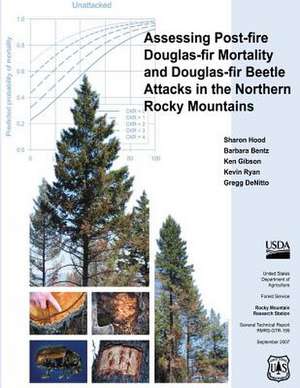Assessing Post-Fire Douglas-Fir Mortality and Douglas-Fir Beetle Attacks in the Northern Rocky Mountains
Autor Sharon Hood, Barbara Bentz, Ken Gibsonen Limba Engleză Paperback
Preț: 99.94 lei
Nou
Puncte Express: 150
Preț estimativ în valută:
19.12€ • 20.45$ • 15.94£
19.12€ • 20.45$ • 15.94£
Carte disponibilă
Livrare economică 28 martie-11 aprilie
Preluare comenzi: 021 569.72.76
Specificații
ISBN-13: 9781480164581
ISBN-10: 1480164585
Pagini: 38
Dimensiuni: 216 x 280 x 2 mm
Greutate: 0.11 kg
Editura: CREATESPACE
ISBN-10: 1480164585
Pagini: 38
Dimensiuni: 216 x 280 x 2 mm
Greutate: 0.11 kg
Editura: CREATESPACE
